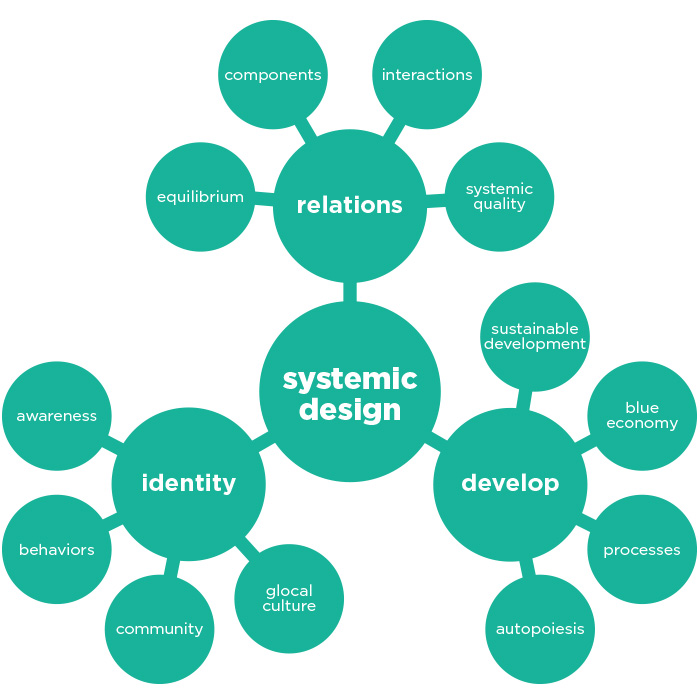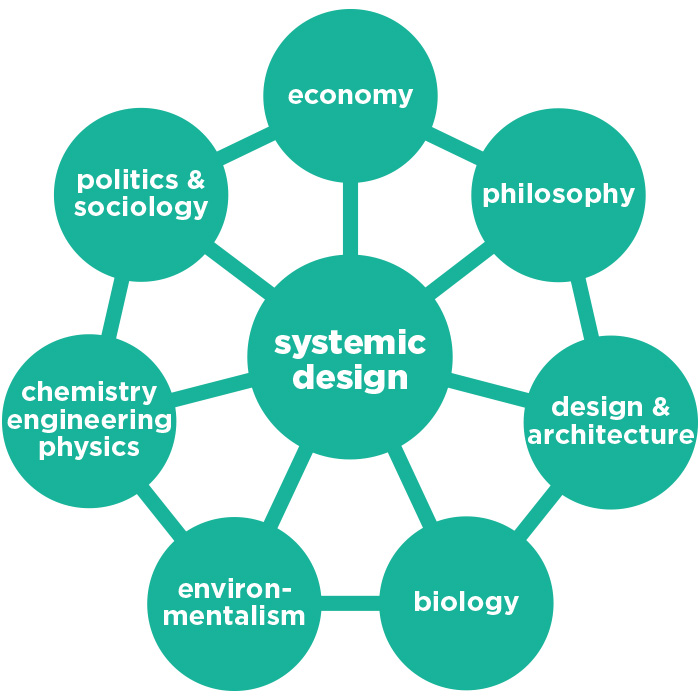What is Systemic Design
Systemic design is a new way of facing the design activity, the productive processes and obtaining sustainable goods. The output of a system is the input of an other one. A systemic designer is able to plan the flux of matter and energy that flows from a system to an other on towards zero emissions; creating a new economic-productive model; a community of strongly related people and also consciously connected to their own territory. Systemic design defines the relations between the components that are part of a system, valorizes identity and local resources and produces development and well-being for the individual and the community. Relations between components are generated through interaction, in order to find balance. The result is the quality of the generated system. The identity comes from the awareness of the proper own values, which are expressed through behavior. The comparison between local communities produces a glocal culture. By being innovative in processes and their relationships, systemic design creates an economy defined Blue Economy (Green Economy 2.0). Growth occurs by autopoiesis and what you get is a sustainable development.*
* systemicdesign.org; systemsdesign.polito.it; blueeconomy.eu

Values and areas of Systemic Design
Systemic design has its roots in cybernetics and complex systems and mainly relates to the study of industrial and agricultural processes. It refers to important authors and subjects. These include biology (Brand), environmentalism (Petrini, Shiva), sociology and politics (Rifkin), economy (Pauli), philosophy (Latouche), engineering, physics and chemistry (Capra, Meadows), design and architecture (Papanek, Maldonado). Several important Universities studied systems, like Stanford University (von Bertalanffy - physics), MIT (Forrester - engineering), Berkeley (Capra - physics), IIIEE - Lund University (Murata - economics) and, since 2000, Politecnico di Torino (Bistagnino - process design). The Ecodesign course is, since 2014, named in honor of Aurelio Peccei, founder of the Club of Rome. Systemic design is mainly based on the design of concrete values for the Man, with focus on economics and management (Politecnico di Torino collaborates with Deloitte in many projects). The pure aesthetic form is not even taken into account and therefore differs from other worldwide Universities, where the fine arts are ranked first. The role of a systemic designer is to bring together and link all this parts and professionals.*
* Courtesy Pierpaolo Peruccio, Silvia Barbero
